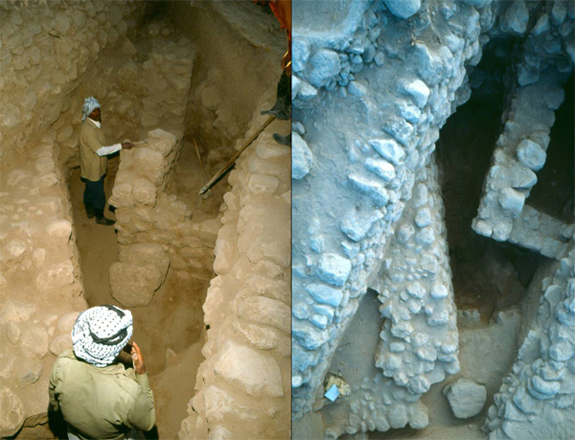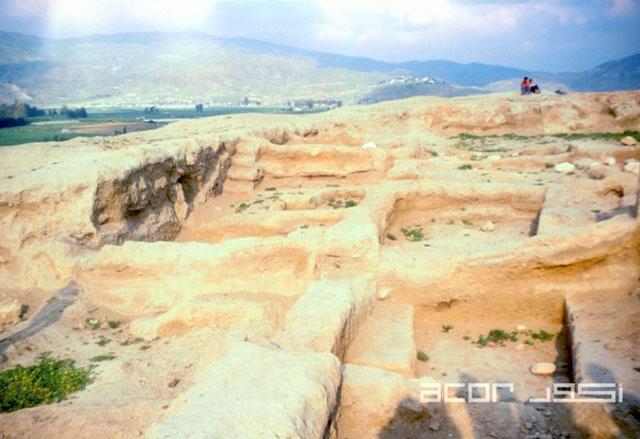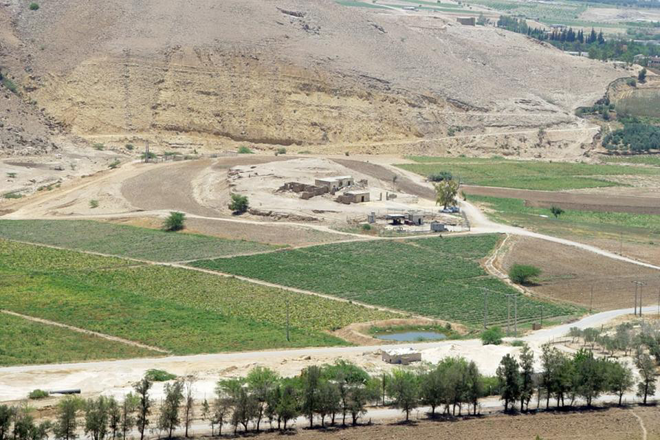You are here
Iron Age in Jordan: Examining theories of chronology through artefacts
By Saeb Rawashdeh - Mar 17,2024 - Last updated at Mar 17,2024

A domestic structure, possibly a house, excavated at the Iron Age site Tell Abu Al Kharaz (Photo of Peter Fisher)
AMMAN — According to the researcher Larry Herr, the Iron Age II A represented the 10th century BC, the Iron Age II B period lasted between the 9th and 8th centuries BC, while the Iron Age II C represented period between the 8th century BC and the 6th century BC.
The scholar Zeidan Kafafi elaborated several theoretical approaches: the household archaeology, the functional ecological approach, the household practices and the community practices. His focuses were different types of domestic houses dated in the Iron Age II found in the northern Jordan Valley. The region is situated between Yarmouk and Zarqa rivers and the area east of the Jordan Valley heights.
“The reason for adopting Herr’s chronological table is due to the following logic: It is not only based on historical events but also to the development in a wide range of the material culture which had appeared as a wide and relative development of other groups,” Kafafi said, adding that Herr did not focus his study on a certain cultural group and, so he achieved a noticeable balance, contrary to most of other studies, which had focused on the archaeology of Palestine, considering other adjacent social groups as marginal and depriving them of their right of individual existence.
Major sites from the Iron Age in northern Jordan are Pella, Tell Deir Alla and Tell Abu Kharaz.
In the case of Pella, we can witness the smooth transition between the Bronze and Iron ages: “Architectural remains belonging to this period were found at the site. It has already been mentioned that Pella attested a strongest occupation during the 12th and early 11th centuries BC, and during the later phase of the Iron Age II in the 8th and 7th centuries,” Kafafi outlined.
During excavations, scholars found a small domestic courtyard having several post-holes containing charred wood which led to a conclusion that the structure was periodically occupied.
“Also, a fragmentary structure and pits were found and assigned to the Iron I-Iron II A period,” Kafafi said, adding that domestic structures at Tell Abu Kharaz were moderately well-preserved and characterised by repairing the earlier structures.
Furthermore, it might be argued that the site Deir Alla produced the only example of the Iron II A (10th century BC) domestic architecture, the professor underlined.
“It seems that excavations conducted at the site revealed that there was a great destruction by the end of the Late Bronze Age [roughly about 1,300BC],” Kafafi said, adding that at the southern slope of the Tell Deir Alla, two major domestic buildings dated to the end of the Late Bronze and the beginning of the Iron Age were excavated.
One is a complex consisting of many rooms and the second is a pillared house, and it has been assumed by the excavators that after the destruction by a very strong fire the inhabitants probably lived in tents seasonally during the winter and spring times.
The finding of a furnace with a metre thick wall chamber and a “tuyère” (a nozzle through which an air blast is delivered to a forge or blast furnace) in one area of the site and three other ones built on top of each other (all with opening towards the north in other area of the site) invited the excavators to deduce that the site was used only for casting bronze during the 10th century BC, the archaeologist concluded.
The thick deposit consisted of dirt mixed with animal bones, large pottery sherds, mud brick fragments, chunks of bread ovens and two children skeletal remains.
Another site, Tell Hammeh is located approximately 2.5km to the east of the Tell Dayr Alla, and situated on the northern bank of the Wadi ez-Zarqa close to the Ajloun mountain ranges which are considered being an extensive source of Iron ore.
“The archaeological excavations conducted at the site indicated that it was occupied from the Pottery Neolithic through the end of the Persian periods, but witnessed few intervals of occupation in between,” Kafafi noted, adding that the Late Iron Age II period is represented by a huge pit (6–7m in diameter) lined with mud-bricks, and with stones at the bottom, cutting through all phases.
In addition, a large number of pottery sherds, loom-weights and two grinding stones were found in this phase.
The Persian Period represents the final phase of occupation at Tell Al Hammeh, Kafafi underlined, adding that work at the site a wealth of 10th century BC remains of iron smelting activities.
Related Articles
AMMAN — Material culture did not experience break between the Bronze and the Iron Age at Pella, a site in north-western Jordan.
AMMAN — The site of Tell Deir ‘Alla, in the central Jordan Valley, was a settlement during the 13th century BC and functioned as a town, not
Activities of the ancient inhabitants of the Jordan Valley near the site of Tell Himmah (around 2.5 kilometres east of Tell Dayr’Alla) have


















